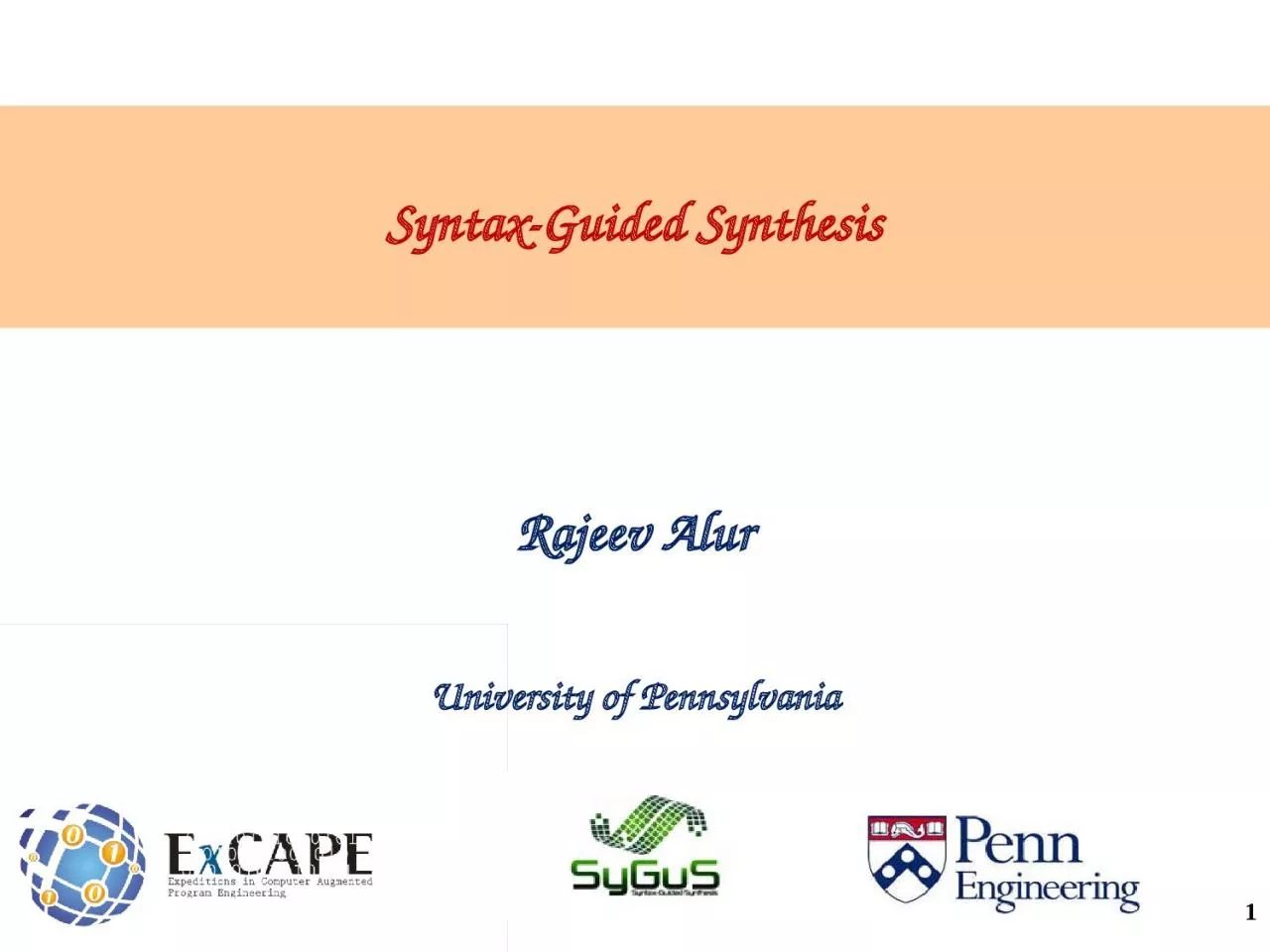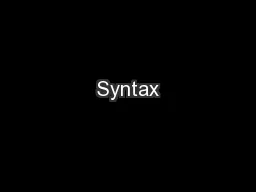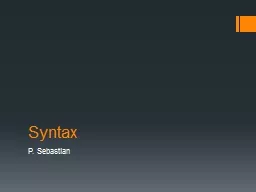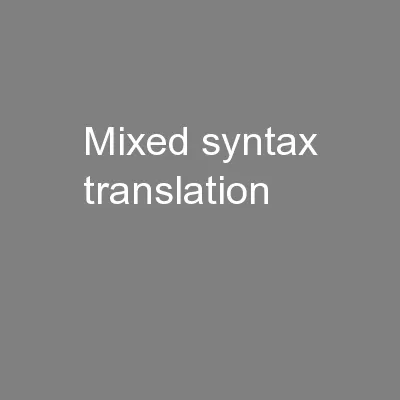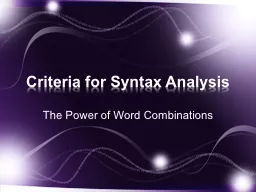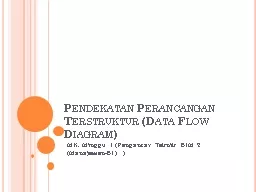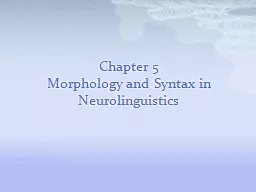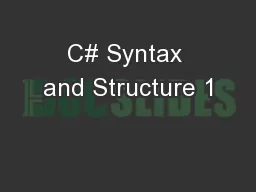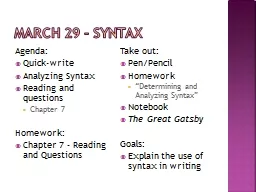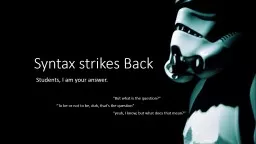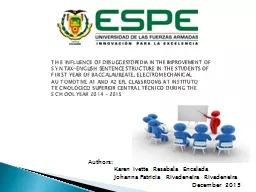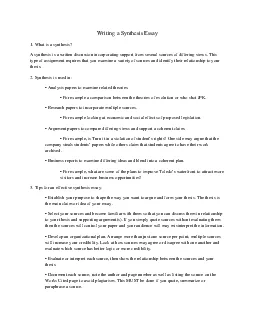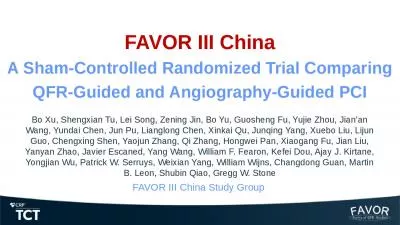PPT-Syntax-Guided Synthesis Rajeev Alur
Author : evelyn | Published Date : 2024-03-13
University of Pennsylvania 1 Program Verification 2 Verifier Proof of correctness or Witness of a bug Specification S Program P Classical Program Synthesis 3 Synthesizer
Presentation Embed Code
Download Presentation
Download Presentation The PPT/PDF document "Syntax-Guided Synthesis Rajeev Alur" is the property of its rightful owner. Permission is granted to download and print the materials on this website for personal, non-commercial use only, and to display it on your personal computer provided you do not modify the materials and that you retain all copyright notices contained in the materials. By downloading content from our website, you accept the terms of this agreement.
Syntax-Guided Synthesis Rajeev Alur: Transcript
Download Rules Of Document
"Syntax-Guided Synthesis Rajeev Alur"The content belongs to its owner. You may download and print it for personal use, without modification, and keep all copyright notices. By downloading, you agree to these terms.
Related Documents

